 W
WEdward III, also known as Edward of Windsor before his accession, was King of England and Lord of Ireland from January 1327 until his death in 1377. He is noted for his military success and for restoring royal authority after the disastrous and unorthodox reign of his father, Edward II. Edward III transformed the Kingdom of England into one of the most formidable military powers in Europe. His fifty-year reign was the second-longest in medieval English history, and saw vital developments in legislation and government, in particular the evolution of the English Parliament, as well as the ravages of the Black Death. He outlived his eldest son, Edward the Black Prince, and the throne passed to his grandson, Richard II.
 W
WThe Accursed Kings is a series of historical novels by French author Maurice Druon about the French monarchy in the 14th century. Published between 1955 and 1977, the series has been adapted as a miniseries twice for television in France.
 W
WL'assedio di Calais is an 1836 melodramma lirico, or opera, in three acts by Gaetano Donizetti, his 49th opera. Salvatore Cammarano wrote the Italian libretto, which has been described as "...a remarkable libretto, the closest Cammarano ever got to real poetry, particularly in his description of the embattled city and the heartfelt pride of its citizens". It was based on Luigi Marchionni's play L'assedio di Calais, which had been presented in Naples around 1825, and secondarily on Luigi Henry's ballet L'assedio di Calais, which had been performed in Naples in 1828 and revived in 1835.
 W
WThe Battle of Blanchetaque was fought on 24 August 1346 between an English army under King Edward III and a French force commanded by Godemar du Fay. The battle was part of the Crécy campaign, which took place during the early stages of the Hundred Years' War. After landing in the Cotentin Peninsula on 12 July, the English army had burnt a path of destruction through some of the richest lands in France to within 20 miles (32 km) of Paris, sacking a number of towns on the way. The English then marched north, hoping to link up with an allied Flemish army which had invaded from Flanders. They were outmanoeuvred by the French king, Philip VI, who garrisoned all of the bridges and fords over the River Somme and followed the English with his own field army. The area had previously been stripped of food stocks by the French, and the English were essentially trapped.
 W
WThe Battle of Winchelsea or the Battle of Les Espagnols sur Mer was a naval battle that took place on 29 August 1350 and was a victory for an English fleet of 50 ships, commanded by King Edward III, over a Castilian fleet of 47 larger vessels, commanded by Charles de La Cerda. Between 14 and 26 Castilian ships were captured, and several were sunk. Only two English vessels were sunk, but there was a significant loss of life. The battle was part of the Hundred Years' War between England and France.
 W
WThe siege of Berwick lasted four months in 1333 and resulted in the Scottish-held town of Berwick-upon-Tweed being captured by an English army commanded by King Edward III. The year before, Edward Balliol had seized the Scottish Crown, surreptitiously supported by Edward III. He was shortly expelled from the kingdom by a popular uprising. Edward III used this as a casus belli and invaded Scotland. The immediate target was the strategically important border town of Berwick.
 W
WThe Black Death was a bubonic plague pandemic, which reached England in June 1348. It was the first and most severe manifestation of the second pandemic, caused by Yersinia pestis bacteria. The term Black Death was not used until the late 17th century.
 W
WBlack Monday took place on Easter Monday (1360) during the Hundred Years' War (1337–60), when a freak hail storm struck and killed an estimated 1,000 English soldiers. The storm was so devastating that it caused more English casualties than any of the previous battles of the war.
 W
WThe Battle of Caen was an assault conducted on 26 July 1346 by forces from the Kingdom of England, led by King Edward III, on the French-held town of Caen and Normandy as a part of the Hundred Years' War.
 W
WThe siege of Calais occurred at the conclusion of the Crécy campaign, when an English army under the command of King Edward III of England successfully besieged the French town of Calais during the Edwardian phase of the Hundred Years' War.
 W
WThe Battle of Calais took place in 1350 when an English force defeated an unsuspecting French army which was attempting to take the city. Despite a truce being in effect the French commander Geoffrey de Charny had planned to take the city by subterfuge, and bribed Amerigo of Pavia, an Italian officer of the city garrison, to open a gate for them. The English king, Edward III, became aware of the plot and personally led his household knights and the Calais garrison in a surprise counter-attack. The French were routed by this smaller force, with significant losses and all their leaders captured or killed.
 W
WCrécy is a graphic novel written by Warren Ellis and illustrated by Raulo Cáceres, depicting some of the events surrounding the historical Battle of Crécy (1346). The graphic novel was published in 2007 by Avatar Press, under the Apparat imprint. The story is told from the point of view of the fictional William of Stonham, a sarcastic and foul-mouthed English longbowman. It features several important characters from the event, including Edward III and Philip VI, the kings of England and France respectively.
 W
WThe Crécy campaign was a series of large-scale raids (chevauchées) conducted by the Kingdom of England throughout northern France in 1346 that devastated the French countryside on a wide front, culminating in the eponymous Battle of Crécy. The campaign was part of the Hundred Years' War.
 W
WThe Battle of Crécy took place on 26 August 1346 in northern France between a French army commanded by King Philip VI and an English army led by King Edward III. The French attacked the English while they were traversing northern France during the Hundred Years' War, resulting in an English victory and heavy loss of life among the French.
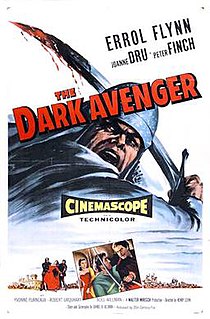 W
WThe Dark Avenger is a 1955 British-American historical adventure film directed by Henry Levin. The screenplay was written by Daniel B. Ullman. The film stars Errol Flynn, Joanne Dru and Peter Finch. The music score is by Cedric Thorpe Davie. It is also known as The Warriors in the United States, and had a working title of The Black Prince in the United Kingdom.
 W
WThe Troublesome Reign and Lamentable Death of Edward the Second, King of England, with the Tragical Fall of Proud Mortimer, known as Edward II, is a Renaissance or early modern period play written by Christopher Marlowe. It is one of the earliest English history plays, and focuses on the relationship between King Edward II of England and Piers Gaveston, and Edward's murder on the orders of Roger Mortimer.
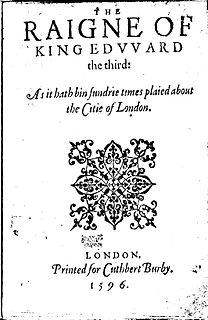 W
WThe Raigne of King Edward the Third, commonly shortened to Edward III, is an Elizabethan play printed anonymously in 1596, and probably partly written by William Shakespeare. It began to be included in publications of the complete works of Shakespeare only in the late 1990s. Scholars who have supported this attribution include Jonathan Bate, Edward Capell, Eliot Slater, Eric Sams, Giorgio Melchiori, Brian Vickers, and others. The play's co-author remains the subject of debate: suggestions have included Thomas Kyd, Christopher Marlowe, Michael Drayton, Thomas Nashe, and George Peele.
 W
WThe First Princess of Wales is a 1984 historical fiction novel by American author Karen Harper. Set during the 14th-century, it follows the romance between Joan of Kent and Edward, the Black Prince.
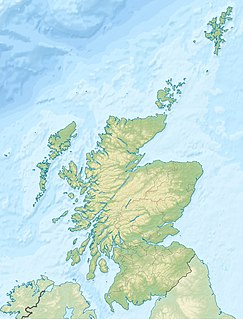 W
WThe Battle of Halidon Hill took place on 19 July 1333 when a Scottish army under Sir Archibald Douglas attacked an English army commanded by King Edward III of England and was heavily defeated. The year before, Edward Balliol had seized the Scottish Crown from five-year-old David II, surreptitiously supported by Edward III. This marked the start of the Second War of Scottish Independence. Balliol was shortly expelled from Scotland by a popular uprising, which Edward III used as a casus belli, invading Scotland in 1333. The immediate target was the strategically important border town of Berwick-upon-Tweed, which the English besieged in March.
 W
WHarlequin is the first novel in The Grail Quest series by Bernard Cornwell, taking place in the mid-fourteenth century.
 W
WHoni soit qui mal y pense is a Middle French maxim, meaning "shamed be whoever thinks ill of it", usually translated as "shame on anyone who thinks evil of it" and used as the motto of the British chivalric Order of the Garter. In current French usage, the phrase may be used ironically to insinuate the presence of a hidden agenda or a conflict of interest.
 W
WThe remains of the so called King Edward III’s Manor House are near the Thames in Rotherhithe in London.
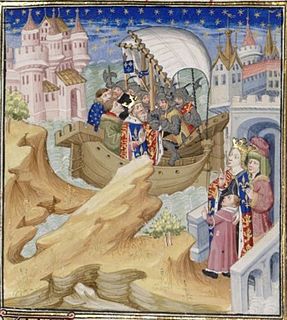 W
WThe Parliament of 1327, the Parliament of England that sat at the Palace of Westminster between 7 January and 9 March 1327, was instrumental in the transfer of the English crown from King Edward II to his son, Edward III. Edward II had become increasingly unpopular with the English nobility due to the excessive influence of unpopular court favourites, the patronage he accorded them, and his perceived ill-treatment of the nobility. By 1325, even his wife, Queen Isabella, despised him. Towards the end of the year, she took the young Edward to her native France, where she entered into an alliance with the powerful and wealthy nobleman Roger Mortimer, who her husband previously had exiled. The following year, they invaded England to depose Edward II. Almost immediately, the King's resistance was beset by betrayal, and he eventually abandoned London and fled west, probably to raise an army in Wales or Ireland. He was soon captured and imprisoned.
 W
WAlice Perrers (1348–1400) was an English royal mistress whose lover and patron was King Edward III of England. She met him originally in her capacity as a lady-in-waiting to Edward's consort, Philippa of Hainault. She went on to become the wealthiest woman in the land. However, she was despised by many and was accused of taking advantage of the far older king with her youth and opportunistic character.
 W
WPhilippa of Hainaut was Queen of England as the wife and political adviser of King Edward III. She acted as regent in 1346, when her husband was away for the Hundred Years' War.
 W
WPoetical Sketches is the first collection of poetry and prose by William Blake, written between 1769 and 1777. Forty copies were printed in 1783 with the help of Blake's friends, the artist John Flaxman and the Reverend Anthony Stephen Mathew, at the request of his wife Harriet Mathew. The book was never published for the public, with copies instead given as gifts to friends of the author and other interested parties. Of the forty copies, fourteen were accounted for at the time of Geoffrey Keynes' census in 1921. A further eight copies had been discovered by the time of Keynes' The Complete Writings of William Blake in 1957. In March 2011, a previously unrecorded copy was sold at auction in London for £72,000.
 W
WThe siege of Guînes took place in 1352 when a French army under Geoffrey de Charny unsuccessfully attempted to recapture the French castle at Guînes which had been seized by the English. The siege was part of the Hundred Years' War and marked the resumption of full-scale hostilities after six years of uneasy and ill-kept truce.
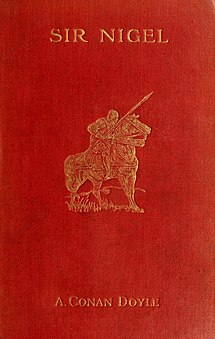 W
WSir Nigel is a historical novel set during the early phase of the Hundred Years' War, spanning the years 1350 to 1356, by British author Sir Arthur Conan Doyle first published in serial form during 1905–06. It is the background story to Doyle's earlier novel The White Company (1891), and describes the early life of that book's hero Nigel Loring, a knight in the service of King Edward III in the first phase of the Hundred Years' War. The character is loosely based on the historical knight Neil Loring.
 W
WThe Battle of Sluys, also called the Battle of l'Écluse, was a naval battle fought on 24 June 1340 between England and France. It took place in the roadstead of the port of Sluys, on a since silted-up inlet between Zeeland and West Flanders. The English fleet of 120–150 ships was led by Edward III of England and the 230-strong French fleet by the Breton knight Hugues Quiéret, Admiral of France, and Nicolas Béhuchet, Constable of France. The battle was one of the opening engagements of the Hundred Years' War.
 W
WThe University of Stamford was an academic institution founded in 1333 in Stamford, Lincolnshire, by a group of students and tutors from the University of Oxford, including Merton College and Brasenose Hall.
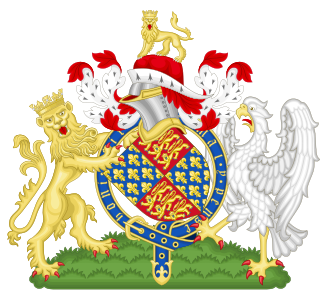 W
WThe Treason Act 1351 is an Act of the Parliament of England which codified and curtailed the common law offence of treason. No new offences were created by the statute. It is one of the earliest English statutes still in force, although it has been very significantly amended. It was extended to Ireland in 1495 and to Scotland in 1708. The Act was passed at Westminster in the Hilary term of 1351, in the 25th year of the reign of Edward III and was entitled "A Declaration which Offences shall be adjudged Treason". It was passed to clarify precisely what was treason, as the definition under common law had been expanded rapidly by the courts until its scope was controversially wide. The Act was last used to prosecute William Joyce in 1945 for collaborating with Germany in World War II.
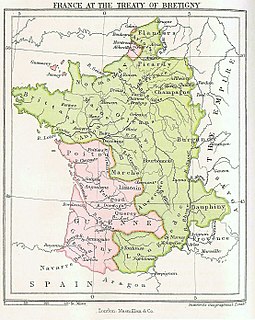 W
WThe Treaty of Brétigny was a treaty, drafted on 8 May 1360 and ratified on 24 October 1360, between King Edward III of England and King John II of France. In retrospect, it is seen as having marked the end of the first phase of the Hundred Years' War (1337–1453) as well as the height of English power on the European continent.
 W
WThe Treaty of Guînes was a draft settlement to end the Hundred Years' War, negotiated between England and France and signed at Guînes on 6 April 1354. The war had broken out in 1337 and was further aggravated in 1340 when the English king, Edward III, claimed the French throne. The war went badly for France: the French army was heavily defeated at the Battle of Crécy and the French town of Calais was besieged and captured. With both sides exhausted, a truce was agreed that, despite being only fitfully observed, was repeatedly renewed.
 W
WThe sieges of Vannes of 1342 were a series of four sieges of the town of Vannes that occurred throughout 1342. Two rival claimants to the Duchy of Brittany, John of Montfort and Charles of Blois, competed for Vannes throughout this civil war from 1341 to 1365. The successive sieges ruined Vannes and its surrounding countryside. Vannes was eventually sold off in a truce between England and France, signed in January 1343 in Malestroit. Saved by an appeal of Pope Clement VI, Vannes remained in the hands of its own rulers, but ultimately resided under English control from September 1343 till the end of the war in 1365.
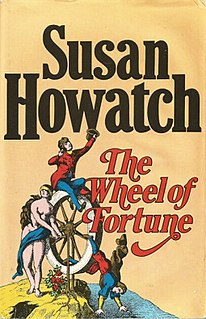 W
WThe Wheel of Fortune (1984) is a novel by Susan Howatch and recounts the trials and tribulations of a fictitious British family, the Godwins, who appear to be part of the minor aristocracy.
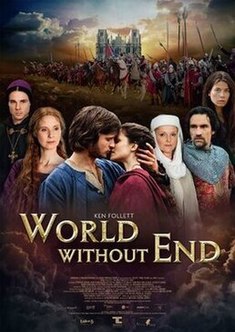 W
WWorld Without End is an eight-episode 2012 television miniseries based on the 2007 novel of the same name by Ken Follett. It is a sequel to the 2010 miniseries The Pillars of the Earth, also based on a Follett novel. World Without End is set 150 years after The Pillars of the Earth and chronicles the experiences of the English town of Kingsbridge during the start of the Hundred Years' War and the outbreak of the Black Death. The cast is led by Cynthia Nixon, Miranda Richardson, Ben Chaplin, Peter Firth, Charlotte Riley, and Tom Weston-Jones. The miniseries varies significantly from the novel in both the plot and characterizations.
 W
WWorld Without End is a best-selling 2007 novel by Welsh author Ken Follett. It is the second book in the Kingsbridge Series, and is the sequel to 1989's The Pillars of the Earth.